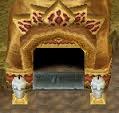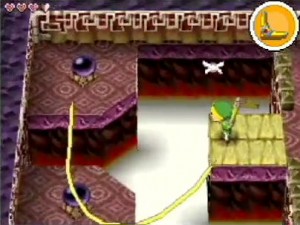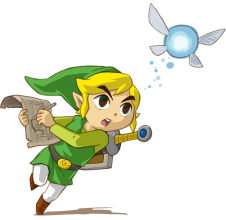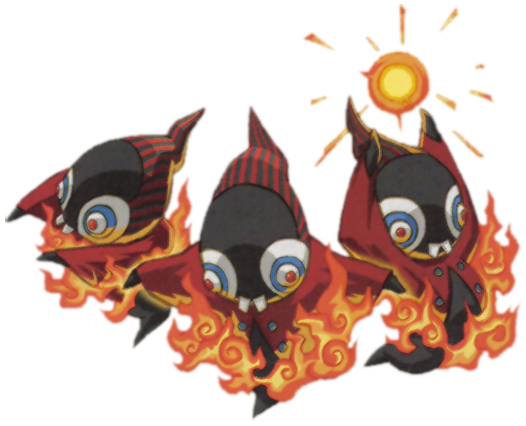Revisiting Phantom Hourglass: The Obligatory Fire Temple
Posted on January 02 2016 by Mark Olson
 Oh, the joys of the Fire Temple. Every Zelda game needs to have one, apparently, and Phantom Hourglass got this particular duty out of the way early. In this second installment of Revisiting Phantom Hourglass, I will be going through the Fire Temple from start to finish and commenting on anything that I see as particularly noteworthy. In addition, I’ll take a look at the basic combat system and how well the touchscreen controls hold up in that context.
Oh, the joys of the Fire Temple. Every Zelda game needs to have one, apparently, and Phantom Hourglass got this particular duty out of the way early. In this second installment of Revisiting Phantom Hourglass, I will be going through the Fire Temple from start to finish and commenting on anything that I see as particularly noteworthy. In addition, I’ll take a look at the basic combat system and how well the touchscreen controls hold up in that context.
Right off of the bat, the game shows that it wants to use the DS’ unique capabilities in dungeon crawling just as much as in the over world. To even gain entrance into the Fire Temple, players are expected to blow into the microphone on the DS in order to extinguish two candles and thus open the door. Though the blowing mechanic isn’t an integral part of the temple and is only used once afterwards, it’s still nice to have it included here.
After killing a few keese, players are shown a map that’s identical to a room at the top of the first floor, with one important difference. An arrow marks a safe path through, and false floors are indicated as well. Players can write down these useful hints on their map using the stylus; every time something like this happens, I am eternally happy for the writing feature. It lends itself naturally to the DS, and makes me, at least, feel like a true adventurer.
Soon enough, a few basic red orb-blue orb puzzles are introduced. Just like the dungeon mechanics introduced on Mercay Island that were discussed in the previous installment, these are exceptionally easy, but serve as a good way to ease players into puzzles without causing any frustration. Upon navigating the first of the puzzles, the boomerang is added to Link’s arsenal in a true surprise that subverts every possible expectation a seasoned Zelda veteran might have walked into this dungeon with. In this same room, players are taught to use the boomerang by drawing a line on the touchscreen and given a basic example by hitting an orb to blow out some flames.

The boomerang is interesting in this game; though it’s always appreciated when the developers try to integrate the hardware, and the stylus is the best way to control the boomerang that I can think of on the DS, the item isn’t as fluid in some places is it was in others. In puzzle-solving situations, the boomerang works well. Players can focus on the touchscreen entirely without having to worry about combat, and the boomerang will lock on to important items like orbs or keys. It’s in combat that the use of the touchscreen gets a bit hairy.
The primary issue is the lack of lock-on capabilities. Despite snapping to stationary objects of interests (and the boss, but we’ll get to that later), the boomerang does no such thing with enemies. This wouldn’t be a problem if only the boomerang wasn’t required to fight a number of foes throughout the dungeon, such as flaming keese and those bizarre, floating skull things. In addition, because the path has to be drawn out before the item can be used, it can be quite tricky to figure out timing. I spent far too long trying to whack a few keese, simply because I couldn’t successfully judge when the boomerang would hit its mark.
Because of this major issue, I can’t call the boomerang an outright success in good conscience. I would be singing its praises far more had the developers allowed for alternative methods of killing the fire keese, or simply given players the option to hit them with their sword. Given just how finicky the item performs in situations requiring quick action, the experience would be better had they left it out of combat entirely.

Speaking of combat, now is as good a time as ever to give my initial thoughts on the combat system of the game. Obviously, these opinions are subject to change as more items and mechanics are introduced throughout the game. Though I was skeptical of the touchscreen controls at first (and still think that it isn’t the ideal way to control a Zelda game), I was pleasantly surprised by the swordplay. It’s certainly not conducive to quick, reflex-dependent battles against multiple enemies at a time, but that’s not what Zelda is about. I encountered very few issues through my first hour-and-a-half of the game, though there was a little bit of trouble with the spin attack where the game decided that I just want to run around in circles rather than hit anything. On the whole, however, I would categorize the swordplay as a success. Again, I don’t think that the touchscreen is the future of Zelda, and neither does Nintendo judging by A Link Between Worlds, but it works well for what it is.
Once players have solved a few more extremely basic puzzles utilizing the boomerang, the boss key is procured and Link starts his showdown with Blaaz, Master of Fire.

Simply put, Blaaz is one of the best first bosses to have ever graced a Zelda game. It’s not particularly challenging or lengthy, but the fight never ceases to be thrilling. At the start of the fight, Blaaz splits into three smaller, impish forms and players have to use the boomerang (which, for whatever reason, decided that it felt like locking on to these particular enemies) to spin the three of them back together, at which point Link can deliver a few sword slashes to the sorcerer. This fight shows what the boomerang could have been had it locked on to all enemies. The frustration that I felt upon fighting with the boomerang earlier in the dungeon vanished with the appearance of a lock-on. Instead of meticulously tracing their desired path and praying that the boomerang would reach its spot in time, the same effect could be garnered with a quick swipe of the stylus. It really lends itself well to the fast-paced combat that players are looking for in a boss-battle.
After some good hits, the process is repeated, but this time with flaming boulders falling throughout the arena. It hardly add much to the gameplay of the fight, but it works for the theming of the battle. Since you’re fighting a powerful fire-based sorcerer, some hot hazards are to be expected. After a few more hits, Blaaz falls and players are treated to a short cutscene (accompanied by a heart container, of course).
That does it for Phantom Hourglass’ obligatory fire temple, as well as the first dungeon of the game. As far as first dungeons go, there have been far worse. Though I wouldn’t say it’s quite as good as the Eastern Palace from my beloved A Link to the Past, it’s good for what it is. It’s neither strenuous on the mind nor the reflexes, but it’s reasonably fun and serves as a good introduction to what future dungeons may have in store for us.
I always ask for the input of my readers, but today is particularly important. I have two directions that I may go in for the next installment of this series. I can either go all the way through the next dungeon up, the wind temple, or I can go up to the wind temple and stop there. The former would take a little bit longer and result in quite the lengthy article while the latter would result in two editorials that would be around the length of this one. I am open to either option, and would like to know which one you guys would prefer. The decision made here would influence the format of the rest of the series, so would you like shorter parts and more installments in the series, or longer parts and fewer installments in the series? The choice is yours, so sound off below.



